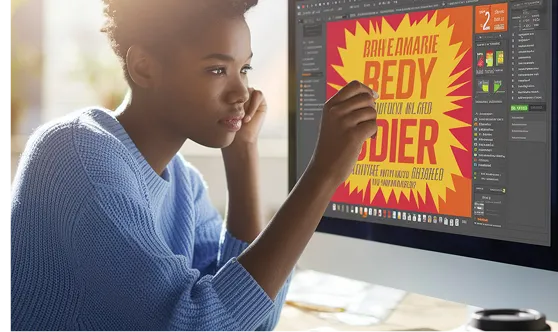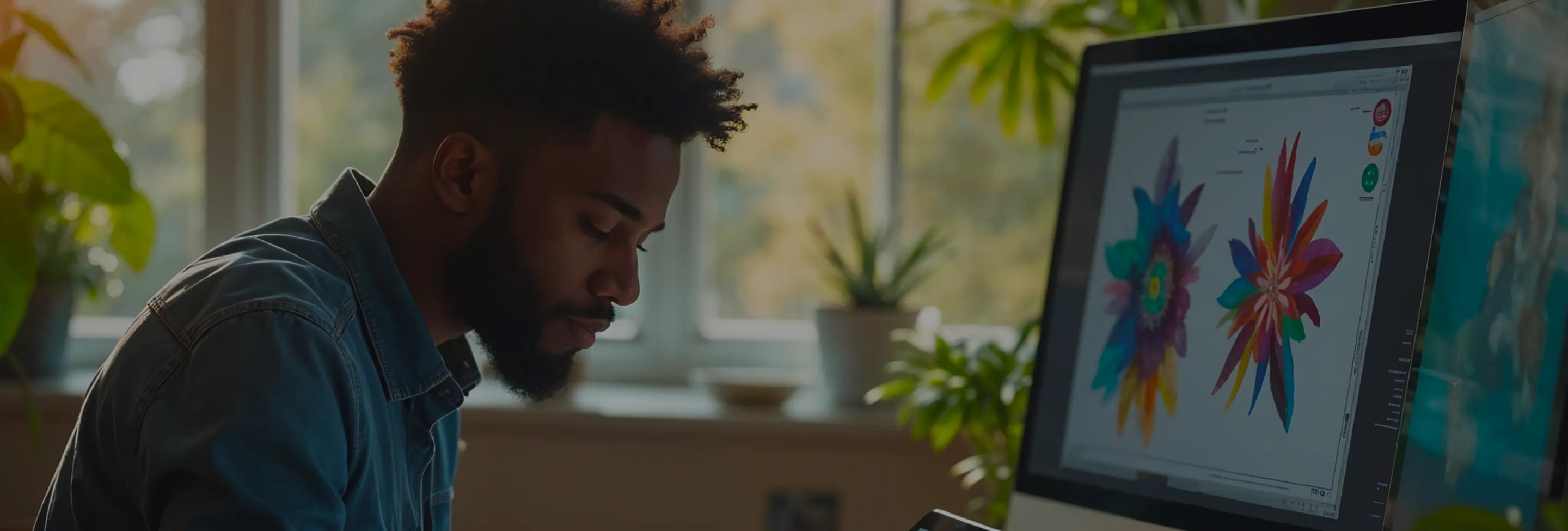
Analyzing over 3,000 logo design projects powered by AI, we've identified the top 20 questions that account for 85% of the challenges and inquiries faced by designers and businesses alike. Whether you're leveraging AI tools for the first time or seeking to refine your logo creation process, this comprehensive Q&A guide offers actionable insights and expert solutions to streamline your design journey and enhance your brand identity.
Answer: An AI-powered logo design tool utilizes artificial intelligence algorithms to generate logo designs based on user inputs such as business name, industry, color preferences, and style choices. These tools analyze vast databases of logo designs, understanding patterns and design principles to create unique, customizable logos efficiently.
Example: Tools like Looka or Canva's Logo Maker allow users to input their preferences, after which the AI generates multiple logo options. Users can then customize these designs further, adjusting elements like fonts, colors, and icons to suit their brand.
Common Misconception: Many believe AI tools produce generic logos. In reality, with the right inputs and customization, AI can create highly unique and brand-specific logos.
Answer:
Actionable Tip: Use AI tools to create initial concepts and then collaborate with a designer to refine the logo for a more personalized touch.
Answer:
Example: A small business owner can use Canva to select a template, customize colors and fonts, and download a professional-looking logo within minutes.
Configuration Sample: In Canva, select the "Logo" template, enter your business name, choose an icon from the library, and adjust the color scheme to match your brand.
Answer: AI algorithms analyze large datasets of existing logos, identifying common design elements, color schemes, typography, and layout patterns. By learning from these datasets, the AI can create new combinations and variations that are both aesthetically pleasing and relevant to the user's specifications.
Real-World Example: Looka's AI examines thousands of logos across different industries to understand what makes an effective logo, enabling it to generate designs that resonate with specific market segments.
Answer:
Actionable Solution: Prepare a brief outlining your business's mission, target audience, and design preferences before starting the AI logo creation process to guide the tool effectively.
Answer:
Troubleshooting Tip: If initial designs feel generic, revisit your inputs and add more specific preferences to guide the AI towards a more distinctive outcome.
Answer:
Code Example: For web-based customization, use CSS to tweak logo elements:
.logo-text {
font-family: 'Montserrat', sans-serif;
color: #FF5733;
}
.logo-icon {
fill: #C70039;
}
Important Note: Ensure that all customizations maintain the logo's scalability and readability across different mediums.
Answer: Yes, many AI logo design tools offer integration capabilities with design software like Adobe Illustrator or Sketch. This allows designers to import AI-generated logos and further refine them using advanced design features available in these platforms.
Practical Example: After creating a logo in Looka, export the design and open it in Adobe Illustrator to add intricate details or adjust vector paths for fine-tuning.
Answer:
Troubleshooting Tip: Experiment with different keywords and preferences within the tool to see how variations can lead to designs that better reflect your brand.
Answer:
Actionable Solution: After generating a logo, conduct a trademark search to ensure that your design is unique and does not infringe on existing trademarks.
Answer:
Configuration Sample: Export the logo in multiple formats such as SVG for scalability, PNG for transparency, and JPEG for high-resolution prints.
Answer:
Real-World Example: A startup uses an AI tool to create a logo, then integrates it with a consistent color scheme and typography across their website, social media, and marketing materials to establish a cohesive brand presence.
Answer: While AI tools can significantly streamline the logo creation process and provide high-quality designs, a professional designer adds value through creative expertise, strategic thinking, and the ability to tailor designs to specific business needs. Combining AI tools with professional design services can yield the best results.
Important Note: AI tools are best used as a starting point or for businesses with limited budgets, whereas professional designers offer a more personalized and strategic approach.
Answer: Not necessarily. AI-generated logos can achieve high quality by leveraging vast design data and adhering to best practices. However, the quality depends on the tool used and the level of customization applied. For unique and highly specialized designs, human designers may still have the edge.
Actionable Tip: Evaluate multiple AI tools and utilize customization features to enhance the quality and uniqueness of your logo.
Answer: Some AI tools offer features for creating animated logos by adding motion elements to static designs. Alternatively, export the AI-generated logo and use animation software like Adobe After Effects to animate specific parts, such as logo icons or text elements.
Code Example: Using CSS for simple animations:
@keyframes fadeIn {
from { opacity: 0; }
to { opacity: 1; }
}
.logo-icon {
animation: fadeIn 2s ease-in-out;
}
Practical Example: An online store might animate their logo icon to spin or change colors when users interact with the website, enhancing brand engagement.
Answer: Yes, many AI logo design tools incorporate accessibility considerations by suggesting color contrasts and readable fonts. Additionally, designers can further refine logos to ensure they meet accessibility standards, such as WCAG, by manually checking contrast ratios and font sizes.
Actionable Solution: Use tools like WebAIM's Contrast Checker alongside your AI tool to verify that your logo maintains sufficient contrast and readability for all users.
Answer: AI-generated logos can be highly scalable if designed with adaptability in mind. Ensure the logo is versatile enough to evolve with your brand by using flexible design elements that can be modified or expanded as your business grows.
Configuration Sample: Design logos in vector formats such as SVG or EPS, allowing easy scaling without loss of quality.
Important Note: Regularly review and update your logo to align with your brand's evolving identity and market trends.
Answer: Future advancements may include:
Real-World Example: AI could potentially analyze market trends and consumer behavior to suggest logo adjustments that align with emerging aesthetic preferences, ensuring brands stay relevant.
Answer: AI tools can handle edge cases by allowing extensive customization and input of specific requirements. For non-traditional businesses, providing detailed descriptions and unique elements can help the AI generate logos that reflect the brand's distinctiveness.
Actionable Tip: Use the customization features to input unconventional symbols, unique color palettes, or abstract designs that represent your unique business model.
Answer:
Mitigation Strategies:
Important Note: Recognize AI's role as a tool to assist, rather than replace, human creativity and strategic thinking in the logo design process.
Harnessing AI for logo design offers a blend of efficiency, customization, and affordability, making it a valuable resource for businesses and designers. By understanding the capabilities and limitations of AI tools, and integrating best practices into the design process, you can create impactful and enduring brand identities. Use this expert Q&A guide to navigate the nuances of AI logo design, ensuring your logo not only stands out but also evolves with your brand's growth.




Subscribe to our newsletter to receive $100 off your first month of Tapflare's flat rate unlimited design and development service. Your coupon code will be sent to your email.